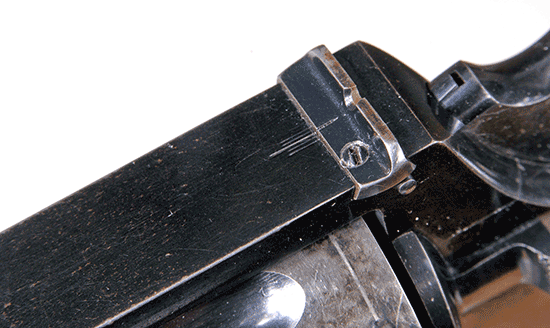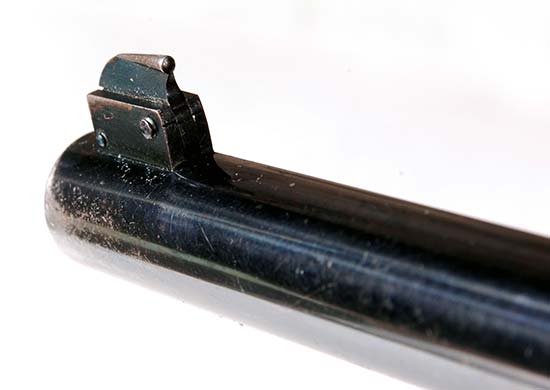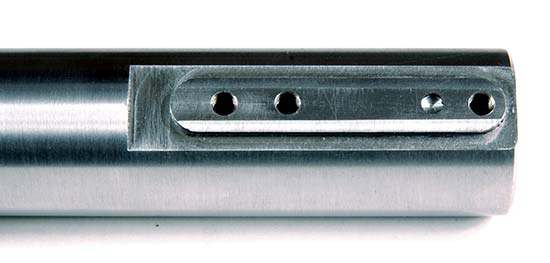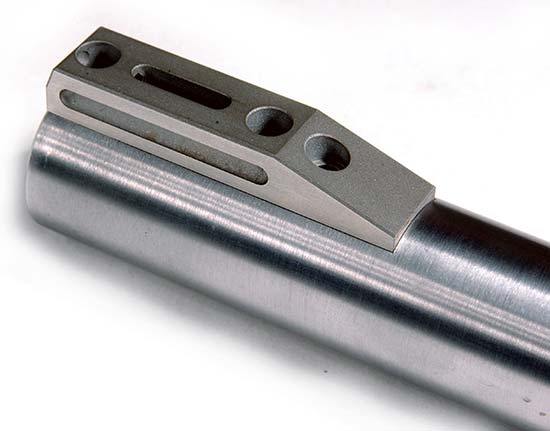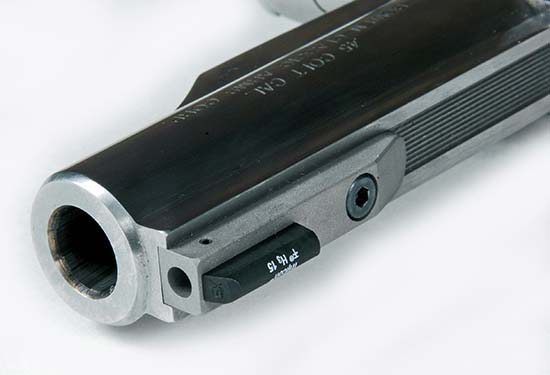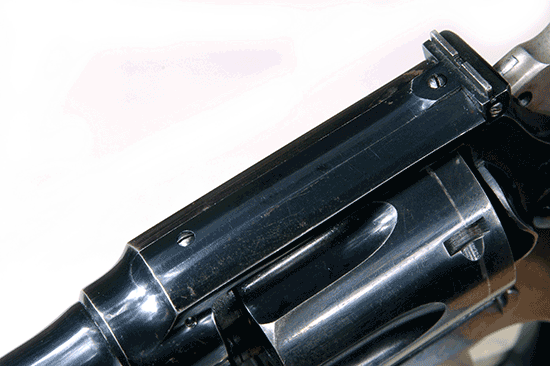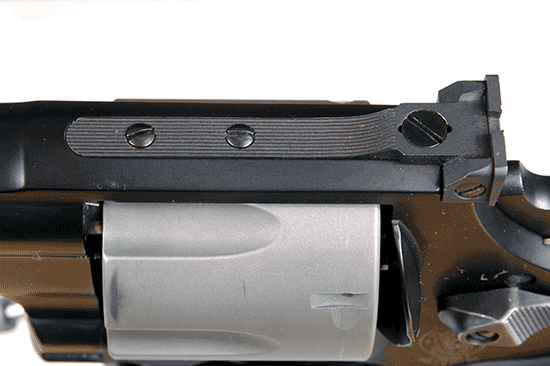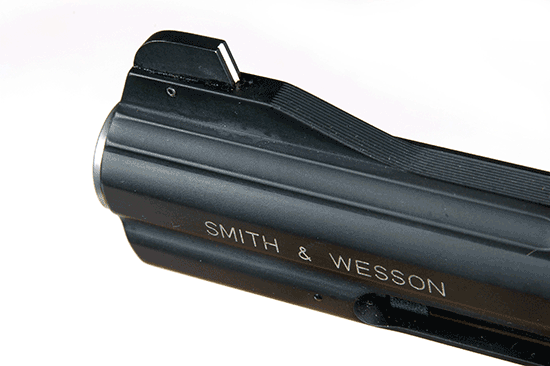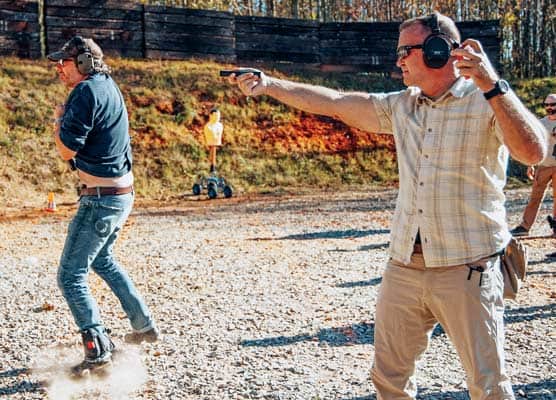Exclusive: Bowen Classic Arms' Sights
Why Your Revolver Needs Better Sights!
Pistol sights have come a long way — and some sights more than others. While autopistols have benefitted from near-universal dovetail mounts for both front and rear sights (pioneered by Wayne Novak), revolvers still suffer from sights often hard to see and even harder to change. From highly polished front blades on sixguns like the Colt SAA and Ruger Vaquero to the shallow notch rear sights — also highly polished — revolvers remain too often tied to the past. Which is what we love about them — but we also like to hit what we shoot at.
The worst offenders are tiny and reflect light, making it hard to even see the sight, a common problem on older designs. Never forget part of the reason point-shooting was so popular in the early 20th century is that the sights of the day often literally could not be seen at all.
Even those that are crisp and easy to see, however, are often machined as part of the barrel and are virtually impossible to change without major surgery. Yes, I’m thinking of the iconic S&W front sight with the red plastic insert. While they may work for some, many of us have a particular sight picture we prefer, or just want more options. Such is our habituation to the infinite options of the semi auto.
Bowen’s Work
Many of you may know the name Hamilton Bowen either from his byline here at FMG or groundbreaking work with mammoth-flattening sixgun cartridges such as the Linebaugh family. For years, Hamilton has also quietly been leading a revolution in improved sighting for revolvers of the both classic and modern persuasion. Bowen started having sights made for his eponymous custom shop some 20 years ago out of what he describes as “self-defense.”
At the time there wasn’t a high-end rear adjustable revolver sight available and he wanted something commensurate with the quality of the rest of the work his shop turned out. Originally intended for in-house use only, when he discovered there was greater demand for the sights than he had anticipated, he made them available for sale on an a la carte basis.
Bowen’s first rear sight was a click adjustable version, followed by a heavier-duty sight using opposing jam screws to hold the rear sight in place. Not an original idea (early Stevens and pre-war S&W sights were made this way), it’s both more rugged and more adjustable than the “click” sights most of us are used to. Bowen had frequently found the setting he needed on a click rear sight was between two clicks, leaving the gun a little bit off. Opposing screws, however, allow infinite adjustment within their range of motion and the sight uses them for both windage and elevation.
Known as the “Rough Country” design and intended for hard use, another of the sight’s features is the easily-removable rear sight blade, available in a dizzying array of options. Choices include tritium inserts, a white outline, three different depths of express-style shallow “V” (to accommodate front dots only coming in one height) as well as a blank that can be machined into almost any shape your heart desires. Don’t laugh: they’ve done an aperture on request.
Originally intended for use on the single action (SA) Rugers for which Bowen is best known, the Rough Country sight is made in two variants for Smith & Wesson revolvers. One is a drop-in replacement for late model “drill and tap” frames and another has a blank mounting section. In addition to the general improvement in sight picture, the second version is often the only practical replacement for a mislaid factory sight. This is a common problem on larger caliber revolvers used for hunting where rear sights have been removed in favor of a scope. Unfortunately, the lost sight can’t usually just be replaced with another S&W sight because of changes in mounting hole location in both sight and gun.
Bowen’s Rough Country S&W rear sight (which uses jam screws for windage but clicks for elevation) has the traditional long mounting tang up front but is made without holes to compensate for the lack of uniformity in hole locations, which vary as much as .010″-.020″. Measure your gun carefully using the included instructions, provide that information when ordering and the holes will be drilled to your specs before the sight is shipped.
As an example of the craftsmanship in the rear sight, while S&W currently uses a transfer to apply its trademark white outline around the rear sight notch, Bowen machines a shallow groove to hold the paint, which is more labor intensive but also gives a longer-lasting sight picture.
Front Sights
Hamilton’s front sight options offer even more flexibility. Based off S&W’s DX front sight base, there are versions for S&W and double-action Ruger applications, as well as for SA Rugers. While the Ruger Redhawk model (including the Toklat) is a screw-on replacement, the others require re-machining the original sight rib as well as locating and tapping screw holes. While the SA version can be drilled and tapped, it’s designed to be silver-soldered into place.
For those unfamiliar with the DX base, it contains a spring and plunger inside its square housing. A more compact version use a set screw instead of the spring plunger. Grasping the front blade firmly, you push the shoe on the bottom of the sight blade down and backwards until the front of the shoe can be rotated down into place, where the spring will hold it in. Recoil forces only push the front sight more firmly against the surface against which it’s seated — important on those .480 Rugers. Installation and removal can be done with the fingers and require no tools.
While it might seem like gilding the lily to swap out your front sights, remember many sixguns see double duty. Just like the classic example of shooting .38’s out of a .357 Magnum, I like plinking with soft-shooting 255’s out of my .45 Colt Vaquero. But if I’m in bear country, I prefer a 335-gr. solid at the speed of heat, and on both occasions I’d like to hit what I’m shooting at. And even for those not looking to swap back and forth, on some pistols, such as Ruger’s Toklat, the DX system is the only way available to put a new sight on the gun to adjust it for your needs.
As with the rear, the options are almost limitless and include tritium dots, white stripes, gold beads of both the McGivern (square Patridge blade with a gold insert, either flat or domed) and Call persuation (narrow stem with gold bead; think rifle sight) and, of course, blanks. Standard front sight width is .125″ Your choice should be governed by what works for you, although there are some general guidelines.
For example, while a round front sight such as the XS Big Dot works well with a V-shaped express rear sight, typically a square rear sight notch should be lined up with a square front post, as it can otherwise be difficult to line up correctly. I’ve got an M1911 with a mis-matched round/square sight setup, and though it’s deadly accurate I’ve never been able to hit with it consistently.
Gold beads, which have been coming back into favor lately, were the original old-school night sight. Generally made of actual gold, they never tarnish and the convex ones collect available light to help draw your eye to the front sight. I’ve used this setup instead of tritium on my carry pistols for almost ten years now and have never felt disadvantaged.
Although he offers fiber optic fronts, Bowen, like many of us, is on the fence about their practicality, since they tend to be fragile and there’s not much sense getting used to something that may not be there when you need it.
Classic Single Actions
Unlike adjustable-sighted Super Blackhawks and the like — classic single actions have their own set of problems. On pistols patterned after the Colt SAA (such as the popular Vaquero), the frame topstrap goes uphill from the rear sight notch, which makes it hard to tell which of the two planes — the notch or the curved topstrap — should be aligned with the front sights. Bowen’s answer is to black the rear sight notch to create a clearly-defined aiming surface.
The front sights take a bit more. While elegant, the traditional front sight blade is both hard to see — particularly on bright stainless or nickel guns — and impossible to adjust without filing. Silver soldered in place, many have already been filed to get the right height, which may or may not be correct for you and the loads you want to shoot. While they can be re-welded, it’s virtually impossible to then re-file the sight into the correct contour so it looks right.
Bowen’s answer is the Colt-style dovetail front sight originally found on the Sheriff’s Model. Featuring a removable blade pinned into a base dovetailed into the barrel, it’s easy to tap out the pin and replace the blade as needed without the need to take a torch to the muzzle of your gun. Classy, elegant and functional, a serrated black blade is also a lot easier to see than the polished arc of the usual sight. I have one on a Bowen-modified Old Model Vaquero that’s been my boondocking gun for over a decade and it has served me very well.
Bowen’s sight modifications make classic sixguns much easier to shoot accurately and his comprehensive line of sights for more modern revolvers make them easily adaptable for virtually any use. If you can’t see your sights, or if they don’t make the bullet go where you want, it may be time to study up on Bowen’s website catalog and place a phone call.
For more info:
Bowen Classic Arms
Ph: (865) 984-3583
https://americanhandgunner.com/company/bowen-classic-arms/


